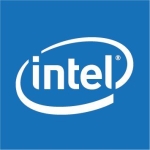What is our primary use case?
We primarily use the solution for running an ERP. Use cases can go from very small to very big. I'm talking about a hardware device, and therefore it can run all kinds of different software. The virtualization is outstanding. It can go from very, very small to very, very big. We personally use it so that we can use multi-tenancy.
I can have multiple clients on one server and I can cut it up into tiny pieces. Where a customer would normally have to buy, let's say, one solution for a hundred thousand dollars, instead, they can share that a hundred thousand dollars with five other customers as one customer doesn't actually need a complete server. Clients can share it for cost reasons.
What is most valuable?
It's very secure.
I can have what they call multi-tenancy, meaning that I can have multiple tenants within the same server.
The reliability of the solution has been excellent.
The solution is stable.
Technical support is exceptional.
The scalability is very, very good.
What needs improvement?
I've worked with the solution for a very long time, and therefore, when it comes to the things that it doesn't support, I've accepted that and I understand why they won't. If you asked me what I'd like added, I'd say that it'd be nice if they ran GPUs, however, I know that's not the direction they're going. That said, I would appreciate it if they offered GPU support.
It used to have it and they pulled it out. That's something that's missing from it, however, there are workarounds.
For how long have I used the solution?
I've been working with this product for 35 years.
Buyer's Guide
IBM Power Systems
March 2025
Learn what your peers think about IBM Power Systems. Get advice and tips from experienced pros sharing their opinions. Updated: March 2025.
845,406 professionals have used our research since 2012.
What do I think about the stability of the solution?
The solution is very stable. There are no bugs or glitches. the security is excellent and the performance is good.
I literally have customers that have a server like this in a cupboard and they don't even know where their server is as it just keeps running.
What do I think about the scalability of the solution?
The scalability on offer is excellent. It's very easy to scale and works well for small to large organizations.
How are customer service and support?
Technical support is excellent. We have been very happy with the level of service we get.
How was the initial setup?
The initial setup is very simple and straightforward. It's not complex. A company shouldn't have any issues with the implementation.
In terms of maintenance, we have a large staff, however, that's necessary due to the fact that we support so many clients. You need an administrator and it depends on how many clients you have, how many administrators you need. For a lot of our clients, we sell them one of these servers, and then we do all the work for them. We install it and then we do the administration. You need the appropriate administrators when you have this product. Small clients may need one administrator, whereas larger ones might need three or four.
Which other solutions did I evaluate?
We also work with Lenovo.
What other advice do I have?
We are a reseller of IBM and Lenovo equipment. We are on the infrastructure side, mostly on the hardware side.
We sell systems to clients, however, we also have a cloud environment that we sell to clients using that equipment. We always say to customers, we sell what to them what we use ourselves.
We use versions seven to ten.
There are a lot of well-kept secrets to this product that a lot of people are not aware of and do not leverage all of the features that are available on the system. Therefore, if a company is looking to implement this solution, it should do some research. Go to user groups to speak to other users to find out about those well-kept secrets, free of charge.
I'd rate the solution a perfect ten out of ten. It's outstanding. It's so reliable. I have customers that run it that never touch it. It runs for 20 years by itself in a closet. It runs their entire business.
Which deployment model are you using for this solution?
Hybrid Cloud
Disclosure: My company has a business relationship with this vendor other than being a customer:










